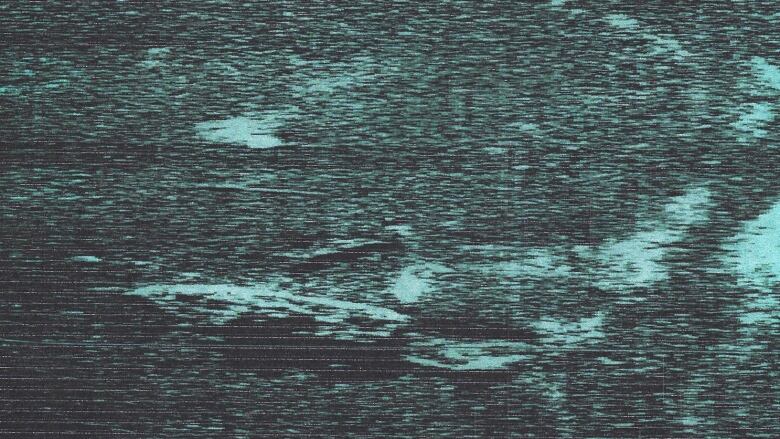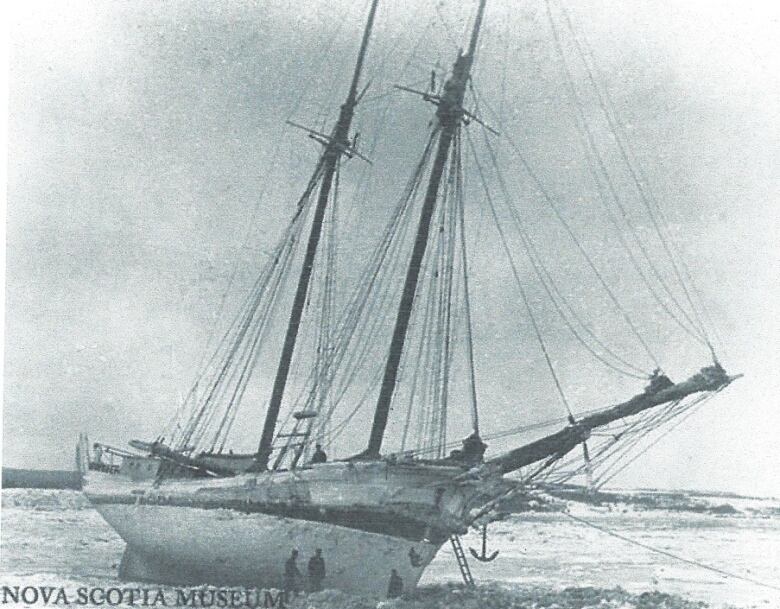Is a mystery shipwreck connected to the Halifax Explosion?
Expensive copper-clad steam-powered schooner discovered in 2002 at bottom of Halifax harbour

There's a mystery shipwreck at the bottom of the Halifax harbour that's baffled researchers and scientists for years.
The schooner'sorigin, even its name, areunknown. Buta marine geologist who helped map the harbour bottom believes itwas sunk on Dec. 6, 1917, bythe Halifax Explosion.
What's left of the shattered steam-powered vesselsits in 28 metres of water, partially buried in silt, and covered in rust and marine growth.
"It's a copper-clad schooner," said marine geologist Gordon Fader.
Fader helped discover the mystery vessel in 2002 when he worked for the Geological Survey of Canada at the Bedford Institution of Oceanography he was part of a team using sidescan sonar to map the harbour's sea floor.

After itwas spotted,divers went down to get a closer look.
"They said it also had some very expensive additions to it," said Fader. "In other words, all of the fittings and the equipment on the deck were high quality brass and other high qualitymaterial. So we were wondering perhaps maybe it was a naval vessel or somebody who seemed to be very rich."
The British Royal Navy started using copper plates in the18thcentury to protect ships from the corrosive effects of the sea and from the accumulation of critters that might damage the vessels.
Outfitting a schooner in copper and brass was an expensive proposition, and losing such a vessel would be incredibly costly. Yet no records exist detailing the schooner's sinking.
That's left Fader to come up with the theory that it was sunk during the Halifax Explosion.
"We were very sensitive after the explosion about ship traffic and events in the harbour," he said, whichleads him to believe the vessel didn't go down in the years after the explosion."I'm sure it would have been in the papers and we would have all known about it."

Researchers tried to track down the origin of the schooner shortly after it was discovered in 2002. Jim Camano with the Heritage Dive Team wrote a report outlining their research.
In the report, Camano said the wreck was found about 100 metres away from the Halifax Shipyard.
Through his research he narrowed the mystery vessel down to two possibilities,the St. Bernard and the Lola R.
Both vessels were believed to have beenlost during the Halifax Explosion.
No blueprints or drawings of eitherwere found but researchers were able to tease out a few vessel specifications.
Camano and the other researchers don't think the mystery schooner is the St. Bernard, since that vesselwas 27 metres long and the shipat the bottom of the harbour isonly about 12 to 16 metres.
Researchers said the Lola Rhad little in common with the mystery schooner, aside from being about the same length. There was alsono mention in any records that the Lola R was steam powered.

After a year and a half of research and diving, the team concluded they could not identify the vessel.
However, they were able to say the schooner was expensive to build because of all the copper and brass components. It was alsobuilt light for speed.
Researchers thought it unlikely the vessel was a tug or commercial ship, but it did have many features suggesting it may have been a navy ship.

The report was completed in 2004. Since then, Fader said very little work has been done to identify the mystery schooner. But he'soptimistic.
"Like all things in Halifax harbour, the last word hasn't come out on many of the shipwrecks and the history. The bottom of the ocean holds lots of secrets," he said. "However, with our new modern technologies and the will, people are always discovering new things."












_(720p).jpg)


 OFFICIAL HD MUSIC VIDEO.jpg)
.jpg)



























































































